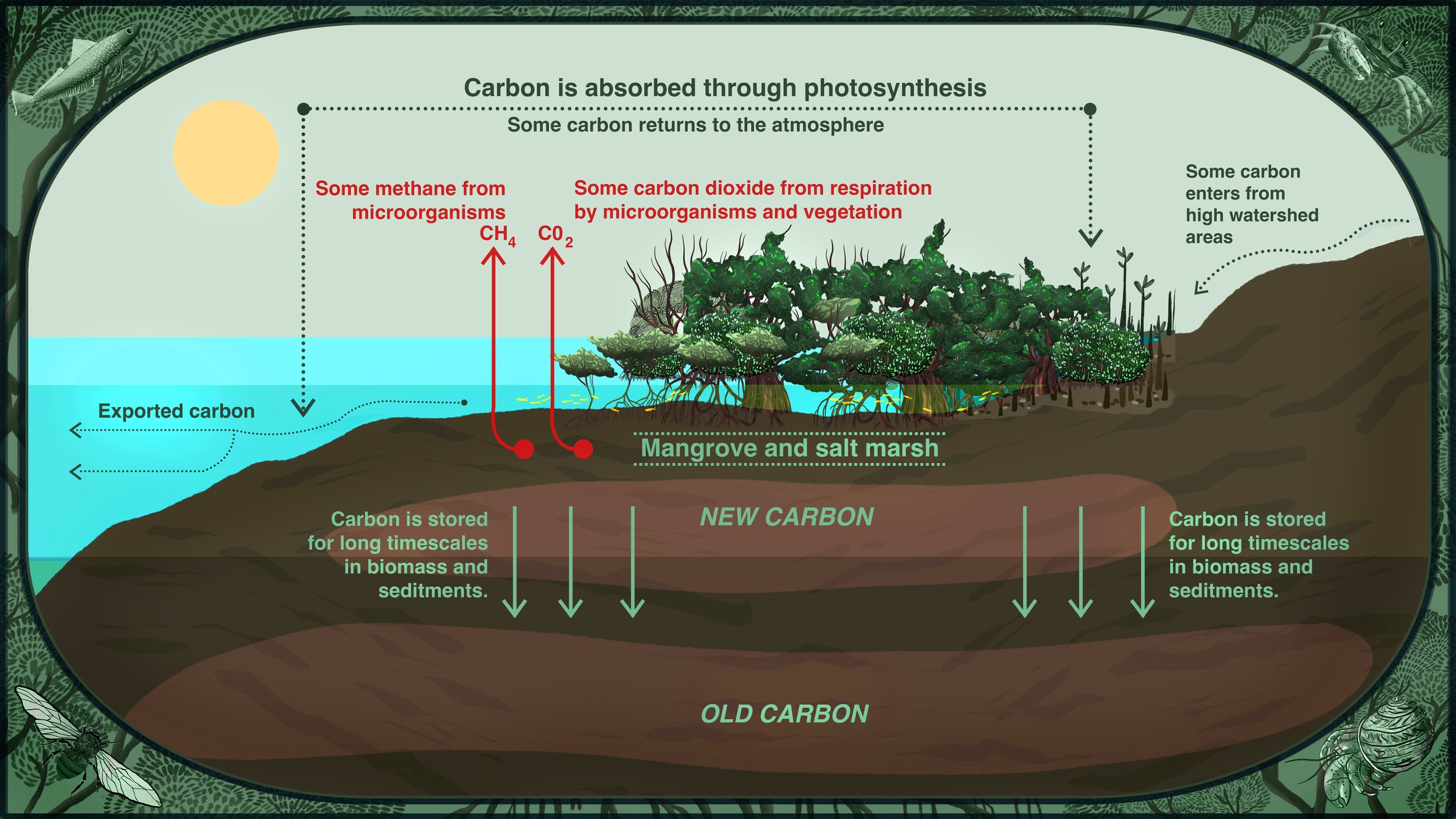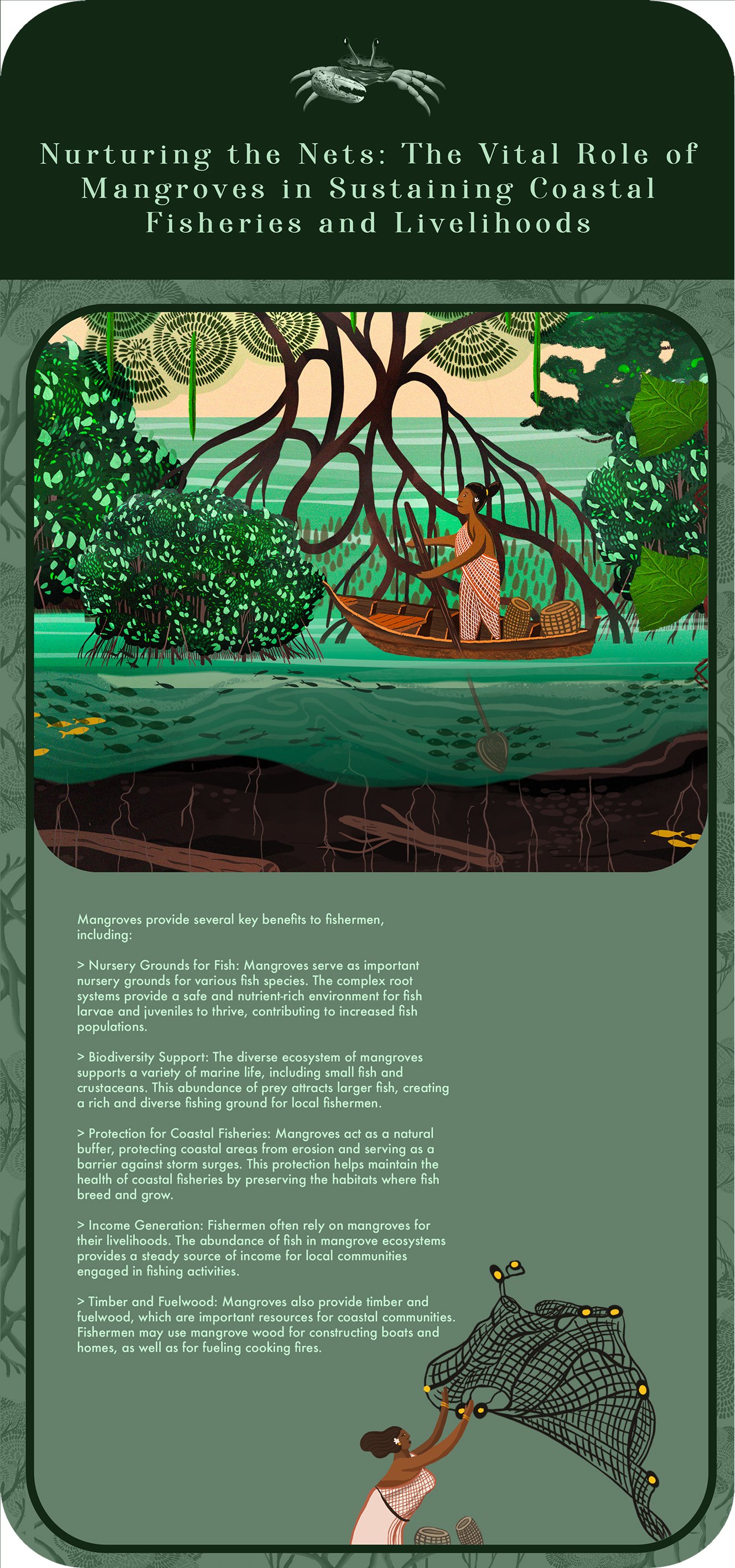Welcome to the enchanting world of Goa’s mangrove ecosystems!
Mangroves are among the most unique and biodiverse ecosystems in the world. These enchanting coastal forests, where magnificent trees emerge from flooded saline waters, are essential for climate change adaptation. They play a vital role in the resilience of coastal communities by protecting shorelines from storms and sea-level rise, preventing erosion, regulating coastal water quality, providing habitat for fisheries and endangered species, and ensuring food security.
Importantly, these incredible forest ecosystems sequester and store significant amounts of carbon from the atmosphere and ocean.
This stored carbon is referred to as blue carbon, along with the carbon sequestered by other marine and coastal ecosystems.
These blue carbon deposits accumulate within mangroves and are stored aboveground in the biomass of plants, including tree trunks, stems, and leaves, below ground in the plant root systems and rhizomes, and in the carbon-rich organic soils typical of these ecosystems.
These rich soil carbon stores can extend up to six meters deep below the surface, where they can remain for millennia.
It is estimated that the average annual carbon sequestration rate for mangroves averages about two to four times greater than global rates observed in mature tropical forests, reflecting their immense value in our fight against climate change.
Plants and trees in coastal ecosystems absorb carbon dioxide through photosynthesis. Some of that carbon returns to the atmosphere as
methane and carbon dioxide, but some is buried in the soil and some
is carried farther away and buried in ocean sediments.
Cut off from the atmosphere, these underwater soils and sediments
make an excellent long-term sink for carbon.
*NOAA Climate.gov graphic adapted from original by Sarah Battle, NOAA Pacific Marine Environmental Laboratory.







